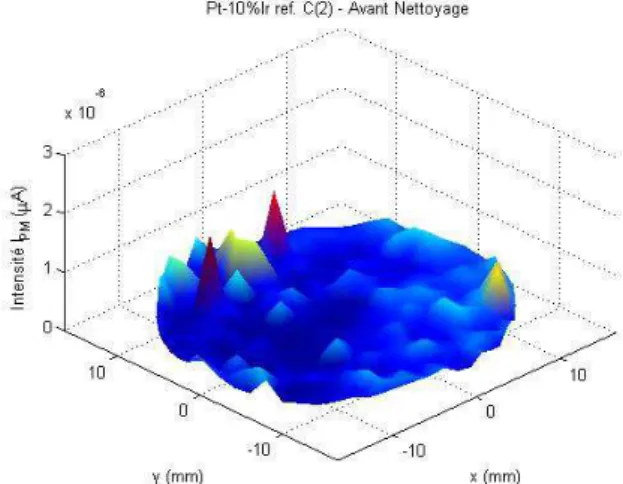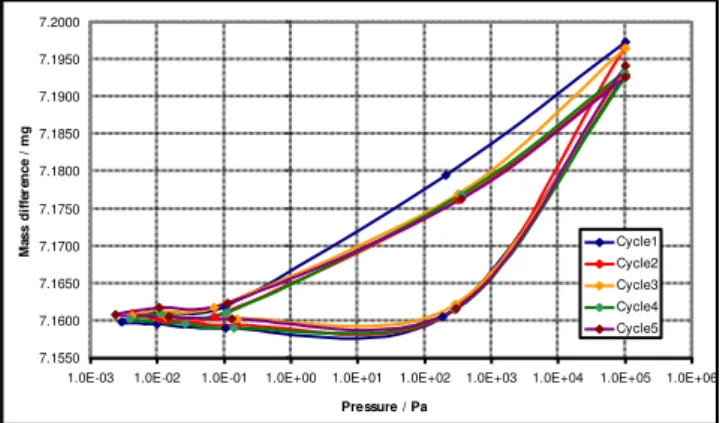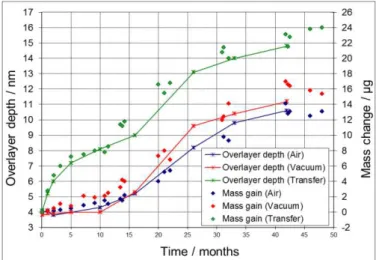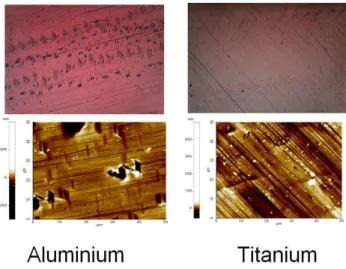Publisher’s version / Version de l'éditeur:
IMEKO 22nd TC3, 12th TC5 and 3rd TC22 International Conferences, pp.
161-166, 2014-02-05
READ THESE TERMS AND CONDITIONS CAREFULLY BEFORE USING THIS WEBSITE.
https://nrc-publications.canada.ca/eng/copyright
Vous avez des questions? Nous pouvons vous aider. Pour communiquer directement avec un auteur, consultez la première page de la revue dans laquelle son article a été publié afin de trouver ses coordonnées. Si vous n’arrivez pas à les repérer, communiquez avec nous à PublicationsArchive-ArchivesPublications@nrc-cnrc.gc.ca.
Questions? Contact the NRC Publications Archive team at
PublicationsArchive-ArchivesPublications@nrc-cnrc.gc.ca. If you wish to email the authors directly, please see the first page of the publication for their contact information.
NRC Publications Archive
Archives des publications du CNRC
This publication could be one of several versions: author’s original, accepted manuscript or the publisher’s version. / La version de cette publication peut être l’une des suivantes : la version prépublication de l’auteur, la version acceptée du manuscrit ou la version de l’éditeur.
Access and use of this website and the material on it are subject to the Terms and Conditions set forth at
Addressing the requirements for the practical implementation and
ongoing maintenance of the redefined kilogram
Davidson, Stuart; Berry, James; Silvestri, Zaccari; Hogstrom, Richard;
Green, Richard
https://publications-cnrc.canada.ca/fra/droits
L’accès à ce site Web et l’utilisation de son contenu sont assujettis aux conditions présentées dans le site LISEZ CES CONDITIONS ATTENTIVEMENT AVANT D’UTILISER CE SITE WEB.
NRC Publications Record / Notice d'Archives des publications de CNRC:
https://nrc-publications.canada.ca/eng/view/object/?id=51a54c4f-4ae1-422a-bb8d-99b5cb03bda5 https://publications-cnrc.canada.ca/fra/voir/objet/?id=51a54c4f-4ae1-422a-bb8d-99b5cb03bda5
IMEKO 22nd TC3, 12th TC5 and 3rd TC22 International Conferences 3 to 5 February, 2014, Cape Town, Republic of South Africa
ADDRESSING THE REQUIREMENTS FOR THE PRACTICAL
IMPLEMENTATION AND ONGOING MAINTENANCE OF THE REDEFINED
KILOGRAM
Stuart Davidson
1, James Berry
1, Zaccari Silvestri
2, Richard Hogstrom
3, Richard Green
41
National Physical Laboratory (NPL), Teddington, UK,
stuart.davidson@npl.co.uk
2
Conservatoire National des Arts et Métiers (CNAM), Paris, France
3
Mittatekniikan Keskus (MIKES), Espoo, Finland
4
National Research Council Canada (NRC), Ottawa, Canada
Abstract: The unit of mass, the kilogram, is the last of the seven base units of the International System of Units (SI) to be defined in terms of a material artefact rather than by relation to an invariant of nature. Progress is being made towards a redefinition in terms of the Planck constant (h), realised via the watt balance and Avogadro experiments. This paper describes the results of investigations to develop mass standards compatible with use in vacuum, and methods for the transfer, storage and cleaning of these standards in order to satisfactorily implement and disseminate the kilogram redefinition.
Keywords: kilogram, redefinition, vacuum, transfer, storage, cleaning.
1. INTRODUCTION
The unit of mass, the kilogram, is the last of the seven base units of the International System of Units (SI) to be defined in terms of a material artefact rather than by relation to an invariant of nature. Progress is being made towards a redefinition in terms of the Planck constant (h), realised via the watt balance and Avogadro experiments.
The development of a practical means of traceability between a new definition and the (current) mass scale is necessary both for the initial fixing of a value for the Planck constant with relation to current scale (the International Prototype Kilogram) in order to redefine the mass unit and for the dissemination of the unit following redefinition with reference to the fundamental realisation (in vacuum). Both the watt balance and Avogadro experiments are designed to realise the kilogram under vacuum conditions whereas the current definition of the unit, from the International Prototype Kilogram (IPK), is realised and maintained in air. In order to set the value of the Planck constant with relation to the current mass scale a means of linking the mass of the IPK in air with a mass in vacuum must be achieved. Once the Planck constant is fixed and the kilogram is redefined, the unit of mass will be realised in vacuum via the watt balance and Avogadro experiments. It is therefore also necessary to consider traceability from this realisation in vacuum to the mass scale in air which supports the current
user community. Both the fixing of the Planck constant and the subsequent dissemination of the redefined unit must be achieved at the lowest possible level of uncertainty to maximise the benefit of the redefinition to the mass community.
The work described in this paper forms part of a collaborative research project (EMRP SIB05) between several European NMIs to address the requirements for a practical means of disseminating the kilogram following redefinition. This paper is intended to give an overview of the entire project. More detail will be given in future publications. These and other additional information can be found on the project website www.newkilo.sk.
2. NEW MATERIALS FOR MASS STANDRDS
In order to fully exploit the benefits of the kilogram redefinition the development and evaluation of next generation mass standards needs to be undertaken. The artefacts produced must be compatible with the primary realisation experiments for the determination of the Planck and the Avogadro constants (for example in terms of magnetic and vacuum compatibility) to provide traceability to the IPK and subsequently for the maintenance and dissemination of the unit following redefinition.
The suitability of materials such as pure iridium, gold platinum alloy, stainless steel, Ni-based superalloy and single crystal tungsten have been evaluated in terms of magnetic properties, grain structure, hardness and the surface finish. With the exception of the pure iridium sample all metallic samples achieved a similar surface finish using a polishing technique (Ra values between 10 nm and 20 nm). The hardness of pure iridium makes it difficult to polish and this resulted in a poorer surface finish (Ra ≈ 50 nm). A range of complimentary techniques including scattered light, contact and atomic force microscopy have been used to give a confidence in the surface roughness results obtained. Figure 1 shows a typical surface roughness determination, performed by CNAM, of a platinum-iridium artefact using scattered light mapping [1]. Figure 2 shows a
similar artefact characterised by MIKES using atomic force microscopy [2]. The benefit of using complimentary surface roughness techniques is a more robust determination of the various surface roughness parameters of the samples under investigation.
Figure 1: Surface roughness determination of a Pt-Ir artefact using scattered light mapping
Figure 2: Surface roughness determination of a Pt-Ir artefact determined using Atomic Force Microscopy
Surface finishing of silicon by a lapping process produces a roughness of 2 to 3 nm (Ra) but the finishing of single crystal samples of tungsten at NRC was more problematic. Ra values of about 20 nm were achieved but the surfaces showed pitting which could not be removed by further polishing. This was thought to be due to faults (or voids) in the crystal and it is hoped that an improvement in crystal quality will enable a better surface finish to be achieved.
Additional tests will performed on coated samples of copper to assess the suitability of this construction for mass standards to be used in air and vacuum. Techniques such as instrumented indentation and surface acoustic waves will provide information regarding the bonding of the surface plating to the substrate. The plated weights will be cycled thermally and between air and vacuum to ensure the integrity of the plated overlayer.
In support of the Avogadro project tests have also been undertaken on Silicon samples to determine the effect of oxide layer thickness on static charge retention and surface hardness. Samples with native oxide and with thermally grown oxides of nominal depths 5 nm and 10 nm were tested. Static charge was induced in the samples using an ion gun. Charges of a few kV were induced and were measured using a AlphaLab SVM2 surface DC voltmeter. The majority of the static charge could be eliminated simply by earthling the samples but residual charge of a few tenths of a kV was more difficult to remove. An ion source (Fraser 9055 Static Neutraliser) proved more effective but some residual static was still present. A short exposure to UV light proved most effective in eliminating static but care needs to be taken in handling silicon following such treatment or re-charging of the samples will occur.
Material Advantages Disadvantages
Platinum-iridium Well characterised material Easy to machine Expensive Relatively high magnetic permeability Stainless steel Well characterised material
Used for the majority of current weights High magnetic permeability Complex alloys - Surfaces difficult to analyse
Silicon Excellent surface
finish achievable Natural silicon Readily available Very low magnetic permeability
Low density so must be weighed in vacuum Potential static issues
Gold alloy Good magnetic
properties Easy to machine Dense
Low relative hardness Samples analysed showed anomalous sorption characteristics Iridium Hard Good magnetic properties Dense Difficult to machine Expensive Nickel super alloy Similar density to stainless steel Hard Good magnetic properties Relatively expensive and difficult to obtain
Single crystal tungsten
Excellent magnetic properties
Density similar to that of Pt-Ir
Difficult to manufacture artefacts
High quality crystals of suitable size expensive and difficult to obtain Gold plated copper Excellent magnetic properties Easy to manufacture Similar density to stainless steel
Surface relatively soft Quality of artefacts relies on good coating process
Sensitivity of coating not yet fully characterised for air/vacuum cycle
Table 1: Advantages and disadvantages of The materials tested
Table 1 summarises the findings and compares the advantages and disadvantages of the materials tested for use as mass standards (including compatibility with the watt balance experiment.
3. WEIGHING IN VACUUM
Since both the Avogadro and watt balance approaches to the redefinition of the kilogram realise the unit in vacuum, it is crucial to understand and characterise the surface sorption effects on mass standards of transfer between air and vacuum.
Experiments have been performed to characterise gravimetrically the sorption effects of air/vacuum transfer on mass standards of platinum-iridium, stainless steel and silicon. Additionally vacuum pressure effects have been investigated as has the repeatability between different balances and vacuum chambers.
Within the uncertainties of the comparison all equipment used (6 different vacuum balances) showed the same sorption characteristics. Figure 3 shows the sorption characteristics of a set of stainless steel artefacts at various pressures between ambient and 10-3 Pascal over five vacuum cycles. 7.1550 7.1600 7.1650 7.1700 7.1750 7.1800 7.1850 7.1900 7.1950 7.2000
1.0E-03 1.0E-02 1.0E-01 1.0E+00 1.0E+01 1.0E+02 1.0E+03 1.0E+04 1.0E+05 1.0E+06
Pressure / Pa M as s d if fe re n c e / m g Cycle1 Cycle2 Cycle3 Cycle4 Cycle5
Figure 3: Sorption characteristics of stainless steel artefacts over a range of vacuum pressures.
The repeatability of the cycles is excellent. At a pressure of about 10 Pa all approximately half the total desorption from the surface of the artefacts has taken place. As the pressure is reduced further desorption occurs until a pressure of about 10-1 Pascal is achieved. Further reduction in pressure (to about 10-3 Pascal) gives no additional desorption. On increasing the (vacuum) pressure the weights show no significant re-adsorption of mass until a pressure of 10-2 Pascal is reached. Once the weights reach ambient pressure all the desorbed mass has been re-gained. The repeatability of the vacuum cycles and the time taken for mass to be reabsorbed on return to ambient pressure (less than 2 hours) suggest that the observed mas change is due to the desorption/adsorption of water onto the surface of the weights since the accretion/desorption of other chemical species (e.g. hydrocarbons) is likely to take longer and be
much less repeatable [3]. The fact that the air/vacuum cycle used filtered laboratory air at ambient pressures also makes the adsorption of (hydrocarbon) contaminants less likely than if the weights were stored in (unfiltered) laboratory air. Over the first two vacuum cycles a small, permanent, mass loss can be seen as the weights are returned to ambient pressure. This may be due to desorption of existing weakly bonded contaminants from the surface of the weights which are not re-adsorbed on subsequent air-vacuum cycles. The results of this test indicate the importance of specifying and controlling the vacuum pressure during air/vacuum transfer in order to maximise the repeatability of the results and minimise the uncertainty of the predicted mass values of the artefacts.
Surface studies using ellipsometry and X-ray photoelectron spectroscopy (XPS) were also undertaken to better understand the mechanisms for the measured mass changes and to develop air/vacuum transfer protocols which minimise the variation of surface sorption. Figure 4 shows the results of XPS measurements on a platinum-iridium sample transferred between air and vacuum over a period of 3.5 years.
Figure 4: Surface analysis by XPS of a Pt-Ir sample transferred between air and vacuum
The major change in the overlayer composition on the surface of the artefact is an increase in the hydrocarbon (H-C) contamination, the oxide (O) and other carbonaceous contamination layers are relatively stable. Figure 5 shows the results of gravimetric measurements and (XPS) surface analysis over the period of the test described above. There is good correlation between the two sets of measurement indicating that surface analysis has the potential to allow a deterministic determination of the mass change of artefacts without the need to perform comparative weighing against other mass standards. This would be particularly significant for the monitoring and (non-gravimetric) mass determination of silicon spheres used for the future primary realisation of the kilogram.
Figure 5: Gravimetric measurements and surface analysis by XPS of Pt-Ir artefacts
Ellipsometry is a useful complimentary surface analysis technique since it allows measurement to be made in air or vacuum. However, in order to allow the use of ellipsometry to characterise overlayers on mass standards optical models for the overlayers need to be developed. Such models already exist for silicon surfaces as these are most widely used in the surface analysis community. Comparison with XPS has allowed the calculation of optical constant to be determined for overlayers on stainless steel and platinum-iridium surfaces which has enables the development of substrate/overlayer models for these materials. Figure 6 shows the results of comparison between ellipsometry and XPS using the model developed for platinum-iridium artefacts.
Figure 6: Correlation between ellipsometry and XPS for overlayers on a platinum-iridium surface.
4. STORAGE AND TRANSFER OF MASS STANDARDS
To provide the most direct and robust link between the IPK and the redefinition experiments, methods and apparatus for the transfer of mass standards between NMIs
must be developed. After redefinition a means for maintaining the mass scale in the medium term (5 to 10 years) will be necessary between realisations using the redefinition experiments. This medium term maintenance may be realised using the (weighted) mean value of a group of mass standards of different materials stored in different media such as the ensemble of artefacts currently under evaluation at the BIPM [4].
Experiments have been performed to compare storage media and materials to minimise drift and optimise medium term stability for the maintenance of a stable mass value. Figure 7 shows the difference between the stability of silicon mass standards stored in air and in inert gas.
Figure 7: Relative stability of silicon mass standards stored in air and argon.
The artefact stored in air can be seen to gain mass over the period of the test whereas the trend line for the argon stored artefact shows a mass loss. This mass loss (and the initial increased instability in the mass value) can possibly be ascribed to the transfer of the artefact from the storage contained to the balance for weighing which entails a significant about of manual handling. A desorption of contaminants may also account for the initial mass loss of the argon stored artefact (first four data points). However, examining stability of the argon stored mass in more details shows that the later mass values have excellent stability suggesting that the transfer process has been optimised. Further (longer term) tests are underway but the initial results suggest a significant benefit to mass stability of storage in inert gas.
Experiments have also been performed by LEN, NPL and MIKES to identify the most suitable materials with which to construct storage and transfer enclosures for primary mass standards. A long term abrasion test using a modified mass comparator was developed to compare PTFE, PEEK, Torlon, aluminium and titanium as material to support the mass standards. Weights of stainless steel were loaded and unloaded onto pegs of each material 10,000 times and the wear characteristics of the stainless steel surfaces measured using light scattering techniques and Atomic Force Microscopy. Figure 8 shows the results of the
tests performed at MIKES using aluminium and titanium pegs.
Figure 8: Results of surface abrasion tests using aluminium and titanium support pegs on
stainless steel surfaces
The results show that the marking to the surfaces is much less significant with the titanium pegs despite it being a much harder material (than either stainless steel or aluminium. Further tribological investigations are underway but it is thought that the marking of the stainless steel surfaces may be caused by micro-welding (due to the small contact areas) rather than conventional abrasions and that highly polished materials with high surface hardness may be the best means to support mass standards in storage and during weighing.
Thermal desorption spectrometry (TDS) [5] has been used by CNAM to assess the suitability of the above materials for use in vacuum and inert gas storage enclosures. Figure 9 shows the relative desorption of samples of Torlon, PEEK and PTFE measured by CNAM.
Figure 9 Desorption of potential materials for mass storage enclosures.
The relatively small desorption form the PTFE suggest it may be best suited to use in mass storage enclosures both
form an outgassing point of view but also from the fact that less contaminants are likely to be deposited on mass standards in contact with the material.
5. CLEANING OF PRIMARY MASS STANDARDS
The current method for cleaning primary (platinum-iridium) mass standard is the nettoyage-lavage method described by Girard [6] and used at the BIPM. It has been shown [7] that effectiveness of this cleaning method varies depending on the user.
Two new cleaning methods using UV activated ozone [8] and low pressure (hydrogen or oxygen) plasma [9] have been developed and evaluated as alternatives to the nettoyage-lavage method. These new techniques have the advantage that they are non-contact and highly controllable via the parameters of UV intensity, plasma pressure and exposure time. The two cleaning techniques are shown in figure 10.
Figure 10: Plasma (left) and UV/Ozone cleaning apparatus for primary mass standards.
The UV ozone method has been compared directly with nettoyage-lavage at the BIPM [10] and the two new methods have been evaluated for cleaning materials such as those described in Section 2. A repeatable method for cleaning primary mass standards of all materials will form a vital part of the medium term maintenance of the mass scale (and of the realisation via the Avogadro method using a silicon sphere) following redefinition.
6. CONCLUSIONS
Significant progress has been made towards developing a practical means of implementing, maintaining and disseminating a redefined kilogram. Future work will involve the manufacture and evaluation of next generation mass standards from the new materials described and the finalisation of definitive procedures and apparatus for air/vacuum transfer and weight storage and cleaning.
REFERENCES
[1] Haidar Y., Tollens E., Silvestri Z., de Fornel F., Zerrouki C., Picard A., Pinot P., “Study and comparison of two polishing methods for platinum-iridium surfaces by means of three characterization techniques”, Metrologia, 42, 115-128, 2005 [2] R Högsröm, V Korpelainen, K Riski and M Heinonen,
Atomic force microscopy studies of surface contamination on stainless steel weights, Metrologia, 47, 670-676, 2010 [3] Davidson S. “Determination of the effect of transfer between
vacuum and air on mass standards of platinum-iridium and stainless steel”, Metrologia, 47, n°4, 487-497, 2010
[4] http://www.bipm.org/en/scientific/mass/pool_artefacts/
[5] Silvestri Z and Pinot P, “Thermal desorption mass spectrometry (TDS) applications on mass metrology”, XIX IMEKO World Congress, Fundamental and Applied Metrology, September 611, 2009, Lisbon, Portugal
[6] Girard G,” The third periodic verification of national prototypes of the kilogram (1988-1992)”, Metrologia 31 317-36, 1994
[7] Davidson S 2003 “A review of surface contamination and the stability of standard masses”, Metrologia 40 324-38 [8] Berry J., Downes S., Davidson S. “UV/ozone cleaning of
platinum/iridium kilogram mass prototypes” Metrologia, 2010, 47, n°4, 410-418
[9] P. Fuchs, “Low-pressure plasma cleaning of Au and Pt-Ir noble metal surfaces”, Applied Surface Science 256 (2009), 1382 – 1390
[10] Berry J et al., “Comparison of UV/ozone cleaning of platinum/iridium kilogram mass standards with
nettoyage-lavage cleaning”, Metrologia 48 181-186, 2011
The authors gratefully acknowledge support and funding for this work from the National Measurement Office (under the UK National Measurement System Engineering & Flow Metrology Programme). The research leading to these results has also received funding from the European Union on the basis of Decision No 912/2009/EC.



